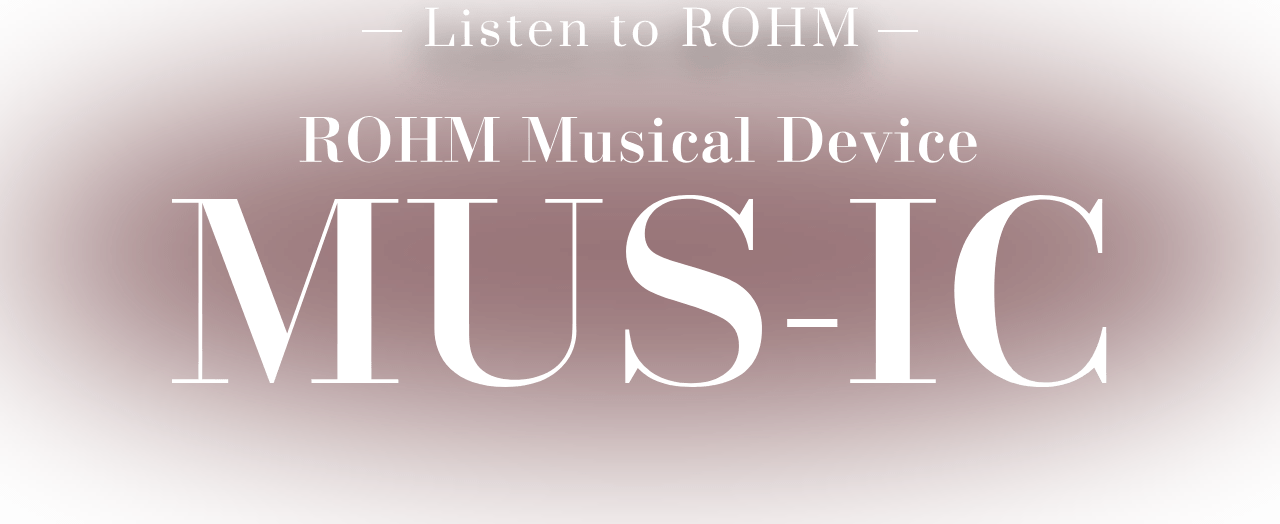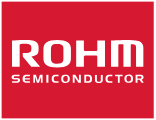
- MUS-IC
- Public Informaion
- Article:Kyoto/Japan-Based ROHM Develops a High-Fidelity MUS-IC DAC Chip and Sister Device
Kyoto/Japan-Based ROHM Develops
a High-Fidelity MUS-IC DAC Chip and Sister Device
Source: May 13, 2022, Published by AV watch (Japanese audio-visual media)
https://av.watch.impress.co.jp/docs/topic/special/1405591.html
Author: Takahito Miura (Japanese audio critic)
Introduction

The key to high sound quality in digital audio playback is the D/A converter that converts digital signals into analog. As such, semiconductor companies are leveraging their resources to develop compact, low-priced DAC chips for mobile applications, or developing DAC chips for high-end audio equipment that pursues the highest performance without regard to cost.
On the other hand, several audio manufacturers also offer discrete DAC circuits without using DAC chips, but instead combine FPGAs with their own programs, fixed resistors, and other components.

Introduced here is a DAC chip for high-end audio equipment developed by ROHM, a leading semiconductor supplier based in Kyoto, Japan. The flagship of the company’s MUS-IC series offering the highest performance, the BD34301EKV has already been adopted in LUXMAN’s well-regarded D-10X SACD/CD player.

ROHM has also released the BD34352EKV – a 32bit DAC that provides almost the same performance but at a lower price – earlier in 2022.

About ROHM
ROHM Semiconductor, the world-renowned semiconductor supplier, was founded in Kyoto, Japan as Toyo Electronics Industry in 1954. The company initially developed and carbon film resistors, and in 1958 became Toyo Electronics Industry Corporation.
In 1967 the company began manufacturing transistors and diodes, and in 1969 began the development of IC (Integrated Circuit). Two years later, ROHM became the first Japanese company to establish an IC development base in Silicon Valley in the US, and since then has continued to push forward with a pioneering approach. The company used ‘R.ohm’ as its brand logo until 1979.
In 1981 the company name was officially changed to ROHM Co., Ltd. a name already well-known around the world that combines the ‘R’ for resistor and ‘OHM’ for the unit of resistance. Then in 2009, to mark the company’s 50th anniversary ‘Semiconductor’ was added to the name and the color changed from blue to red to indicate ROHM’s venturesome spirit, which continues on to this day.

ROHM has established a special top-of-the-line audio device brand called MUS-IC, short for ROHM Musical Device IC in 2018. Developed by combining the company’s corporate culture of ‘quality first’, ‘contributions to musical culture’, and ‘vertically integrated production system’ with ‘sound quality design technology’, MUS-IC is an audio device brand that represents the ultimate IC solutions from ROHM’s team of experienced and dedicated sound engineers. These ultra-high grade audio ICs are a testament to ROHM’s uncompromising sound quality.
Released in 2018, details of the launch event for MUS-IC held at the Palace Hotel in Tokyo, Japan can be found on AV Watch.
The MUS-IC series currently consists of the BD37201NUX power supply IC, BD34704KS2/ BD34705KS2/ BD34602FS-M sound processor ICs, and the BD34301EKV D/A converter. The BD34301EKV DAC chip in particular has been adopted in LUXMAN’s top-of-the-line SACD/CD player, the D-10X. The D-10X spares no expense by utilizing one DAC chip per channel in monaural operation.

Incidentally, the sound processor IC is shown as a volume IC for volume control utilizing proprietary micro-step volume adjustment.
ROHM Enters the High-End DAC Chip Market
While visiting Munich, Germany, in May 2018, I learned that ROHM from Japan was exhibiting at the hifideluxe audio show, held at the same time as the world-renowned HIGH END Munich 2018 audio show.
hifideluxe was a smaller show located in a hotel in Munich, attended by FM ACOUSTICS and other aspiring audio manufacturers. ROHM was in one of the rooms, showcasing its remarkable DAC chip currently under development.
Around that time ESS Technology and Asahi Kasei Electronics (AKM) were making a splash in the high-end DAC chip market, and major players such as Texas Instruments (Burr Brown), Analog Devices, and Cirrus Logic turned their attention to mobile applications market. So I thought it was cool that Kyoto Japan-based ROHM came along to challenge the market for high-end DAC chip.
The following year, in 2019, ROHM took part in a similar exhibit at hifideluxe in Munich, where it unveiled a new version of the DAC chip. This ended up being the final prototype of the BD34301EKV that was adopted in LUXMAN’s D-10X.
Although the audio show was not held the last couple of years due to the pandemic, ROHM’s development team continued its research and development to complete the DAC chip. In the 2020 autumn, it was announced that LUXMAN’s D-10X would be the world’s first product to use the BD34301EKV. Then in February 2021, the DAC chip was released to the public.
In December in the same year, ROHM launched the BD34352EKV as a ‘DAC chip suitable for a wider range of audio equipment’, one that provides a level of performance that approaches the flagship BD34301EKV, bringing the total to two 32bit DAC chips that ROHM offers for high-end audio equipment.
Interestingly, the new BD34352EKV is not a part of the MUS-IC lineup. MUS-IC is a designation given only to ROHM’s flagship products.

Part of the MUS-IC series, the BD34301EKV is a current output 2ch high performance DAC chip that supports PCM up to 32bit/768kHz sampling and DSD up to DSD512 sampling (22.4MHz) while boasting an excellent S/N ratio of 130dB and THD+N of -115dB.
A built-in preset digital filter allows for two selectable settings: Sharp Roll-Off and Slow Roll-Off. In addition, there is a separate area where the user can program the filter circuit or bypass the circuit altogether.
The current output block (current segment circuit) after the Delta-Sigma modulator features the lowest possible power supply impedance. Another feature is a control circuit that minimizes the clock delay difference for the current segment of each channel.
Developing ROHM’s Audio DAC Chip
How did ROHM develop its DACs? I spoke with Yosuke Sato, Senior engineer/specialist, Audio 2G, Standard LSI Div., ROHM, the sound quality manager in charge of development, and Yoshihiro Yamamoto, the senior engineer, Audio 2G, ROHM. With, Masakazu Nagatsuma, Director and General Manager of the Development Department, and Michihiro Tamura, Manager of the Development Department, both from LUXMAN who were involved in the development of the D-10X. It took place in one of LUXMAN’s listening rooms.

I know that ROHM manufactures a variety of semiconductors, but have they ever developed an audio DAC chip?
Mr. Sato (titles omitted hereafter): It was a long time ago, but the products released in those days were 16bit mainly intended for gaming consoles. The MUS-IC BD34301EKV is a newly developed DAC chip for audio that differs markedly from existing DAC chips.
ROHM is a global semiconductor supplier based in Kyoto, Japan. Is the DAC chip manufacturing facility also in Kyoto where ROHM’s headquarters are located?
Yamamoto: No, the DAC chips are manufactured at ROHM Hamamatsu in Hamamatsu City, Shizuoka prefecture, Japan.
So, in terms of DAC chips, ROHM is not a fabless company like ESS Technology, but a fab company with a manufacturing system similar to AKM. MUS-IC, ROHM’s highest grade of audio ICs, takes full advantage of its manufacturing site (Author’s note: ROHM Hamamatsu produces ICs and LEDs).
In Munich, Germany, I had a chance to listen to the prototype DAC chip for the second year in a row. Although the listening conditions weren’t necessarily the same, I remember that the sound quality in 2019 was a clear evolution from what I heard in 2018. It was also unique that a semiconductor chose an overseas audio show as a venue to promote products under development.
Sato: Before announcing the MUS-IC, our development team was designing a 32bit precision DAC chip for high-end audio. We had some trouble during the initial stages, but when we reached a level of sound quality that was ‘good enough’, we decided to exhibit at hifideluxe in Munich to hear what people outside the company had to say about it.

(Sound Quality Manager, Senior engineer/specialist, ROHM)
What kind of difficulties did Mr. Sato and his design team face when designing ICs for audio applications where sound quality is of paramount performance? The paper states, ‘In each step in our vertically integrated production process we have identified 28 parameters that affect sound quality and adjusted them one by one to create the desired sound quality.’

Sato: That’s right. For example, in the packaging process, we investigated how the structure and material of the bonding wire that connects the IC chip to the lead frame can affect sound quality. When developing sound processors (volume ICs) in the MUS-IC lineup we repeatedly tested and verified our hypotheses.
The various efforts to improve sound quality made during development were of great help in the design of the DAC chip. The process was completed in a dedicated room at Yokohama Technology Center, where careful listening sessions were repeatedly held. The excellent sound performance has resulted in our MUS-IC sound processor being adopted in the high-end AV receivers (AV amplifiers) of a certain audio manufacturer.

The DAC Chip was completed here after repeated listening sessions.
I have heard the same thing from other companies in the same industry, and can say that this is a big advantage of being a ‘fab-owned’ company with a manufacturing base. For example, how long does it take to manufacture a DAC chip from start to finish?
Yamamoto: Apart from basic circuit design, layout, photomasking, and other preparations, the actual on-site IC manufacturing process usually takes about three months.

I see. So even if some predictions can be made concerning sound quality improvement, it still takes a lot of time and effort to go from prototyping to finished product, doesn't it?
The Remarkable Difference in the Amount of Information; Adoption in LUXMAN’s D-10X
Mr. Nagatsuma and Mr. Tamura from LUXMAN: How did LUXMAN come to adopt ROHM’s BD34301EKV?

Nagatsuma: When the D-10X was still in the early stages of development, we were actually working on circuit design using current output DAC chips from different manufacturers. The sound quality had not yet reached a satisfactory level, which is when ROHM asked us if we would listen to a high-end DAC they were developing.
Tamura: When I listened to the BD34301EKV mounted on the evaluation board I thought, ‘This is good!’
Nagatsuma: I thought that the sound was very straightforward. Even at that stage, I could feel the high harmonic quality of the 32bit, and the amount of information was astounding.

Tamura: We decided to take this opportunity to quickly start working on a new circuit design, since the sound quality that LUXMAN was aiming for with the D-10X was finally within reach. I also think that the geographical proximity (allowing us to easily consult with one another) of ROHM’s Yokohama Technology Center and LUXMAN contributed to the success of the project.


I think the first time I heard the sound of the D-10X in LUXMAN’s listening room was before the DAC chip was officially announced by ROHM. Before that, a prototype DAC chip was shown to the public in Munich, so I think that it had reached the final stage in terms of sound quality.
Nagatsuma: The D-10X was originally scheduled to be released in December 2019, so we think you must have heard it around October 2019.
Although there is a slight difference in output level between CD and SACD playback (PCM and DSD), the D-10X is not equipped with a correction circuit for adjusting the level based on sound quality. I thought that this is better, but is it a part of the specifications for the BD34301EKV?
Sato: The volume difference between PCM and DSD are included in the specifications for the DAC chip.
The same is true for a certain company’s top-of-the-line SACD/CD player released in the past. And since these are a part of the specifications of the DAC chip, they had to use a digital attenuator of about -6dB for CD playback to adjust the output level, but in the end when comparing sound quality, they preferred not to use the attenuator. This is why an attenuator wasn’t used at the commercialization stage.
Mr. Sato you were involved in development: What changed between the 2018 and 2019 versions unveiled in Munich to improve the sound quality so much?
Sato: Of course, tuning parameters affects sound quality as I mentioned earlier, but at the same time changing the number of taps and degree of attenuation in the digital filter that performs oversampling can also significantly improve sound quality. At the same time, care was taken to minimize stress on the chip within the IC package by making the internal layout of the chip completely symmetrical.

Can you tell us about the new product BD34352EKV?
Sato: Sure. After completing the flagship MUS-IC BD34301EKV, the next step was to develop a lower version DAC chip. This is the BD34352EKV announced late last year (Dec. 2021). But even though it is considered a lower version, this 32bit DAC chip comes close to the MUS-IC in terms of sound quality and performance.

Comparing the two, they feature the same package size and number of pins. In terms of performance, the S/N ratio is 130dB to 126dB with a THD+N of -115dB to -112dB, which are only slightly different.

Sato: The difference with the MUS-IC BD34301EKV is the current output of the current segment at the final stage. Special tuning was carried out to powerfully express the energy of sound sources. And we wanted to ensure full pin compatibility with the BD34301EKV.
Is that the only difference? I think the BD34352EKV is a little cheaper than the BD34301EKV going rate on the market, making the BD34352EKV an outstanding value for the money. And the same 32bit architecture supports PCM up to 768kHz and DSD up to DSD512 (22.4MHz).
Sato: Correct.
That’s great. Speaking of which, both the flagship BD34301EKV and BD34352EKV are current output types. In other words, the side using the DAC chip needs to convert it into a voltage signal. Why did you choose current output?
Sato: We chose current output because we believe it gives engineers more design freedom in determining the sound quality of audio products. For example, the ability to adjust sound quality with I/V (current/voltage) conversion circuits is a major factor. Even in the design of the DAC chip, the S/N ratio can be improved by simply increasing the output current.

Listening Comparison Between the Evaluation Board and D-10X

In addition to the D-10X, the evaluation boards for the BD34301EKV and BD34352EKV were also prepared in a listening room. I brought some CDs from home to listen to, comparing the sound of the D-10X with the MUS-IC BD34301EKV evaluation board.
LUXMAN’s C-900u pre-amp is used, with power supplied by the new M-10X stereo power amp. The speaker system is the Scala Utopia Evo, a high-end model from Focal of France that utilizes inverted dome tweeters and beryllium diaphragms.

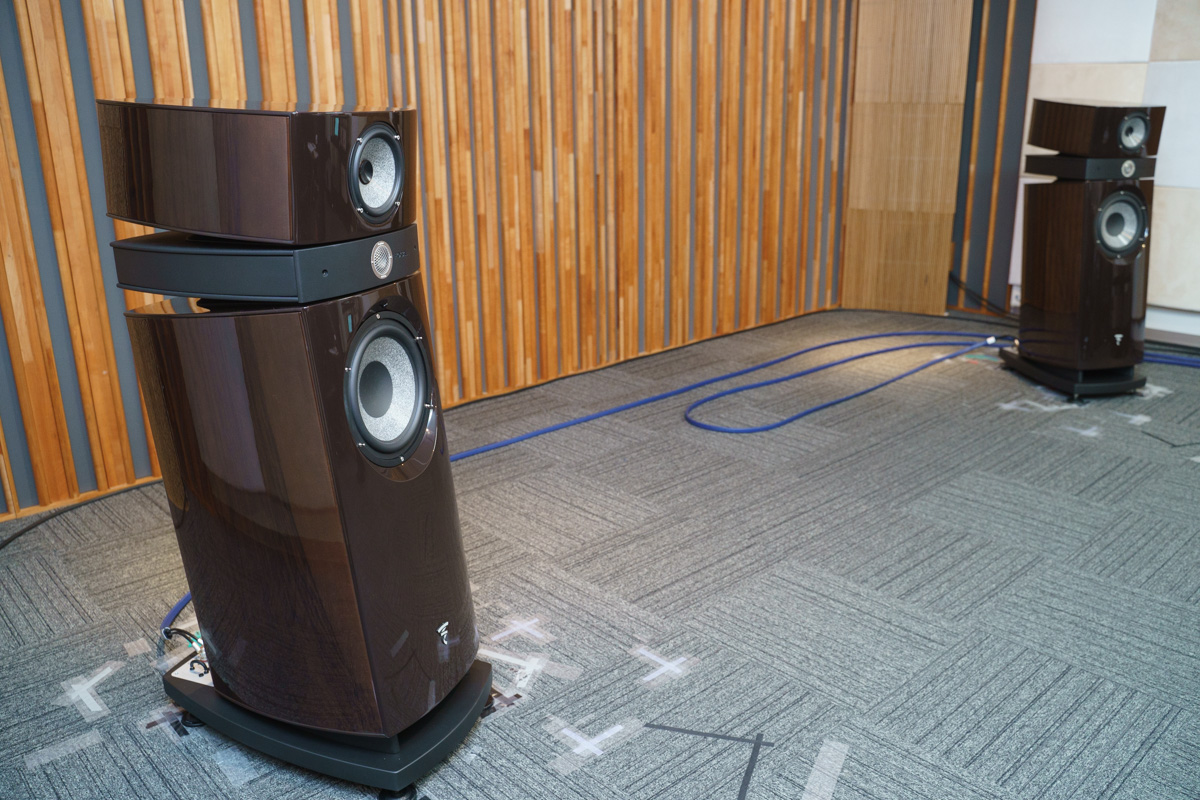
The first song I listened to was ‘Hotel California’ by the Eagles’ live show, which begins with a guitar solo rich in overtones, followed by percussions in the lower register and highlighted by the subtle sound expressions of whistles and applause from the audience. Based on a somewhat sharper sound rendering, the D-10X demonstrated a rich sense of scale with stable bass that never moved and an expanded sound stage.
On the other hand, ROHM’s evaluation board depicted a neutral sound with a resolution that approached that of the original. The D-10X utilizes an external digital filter circuit and has the luxury of using two units total, one on each side, resulting in a sound atmosphere that is naturally different. The scale and content of the power sources were also different.
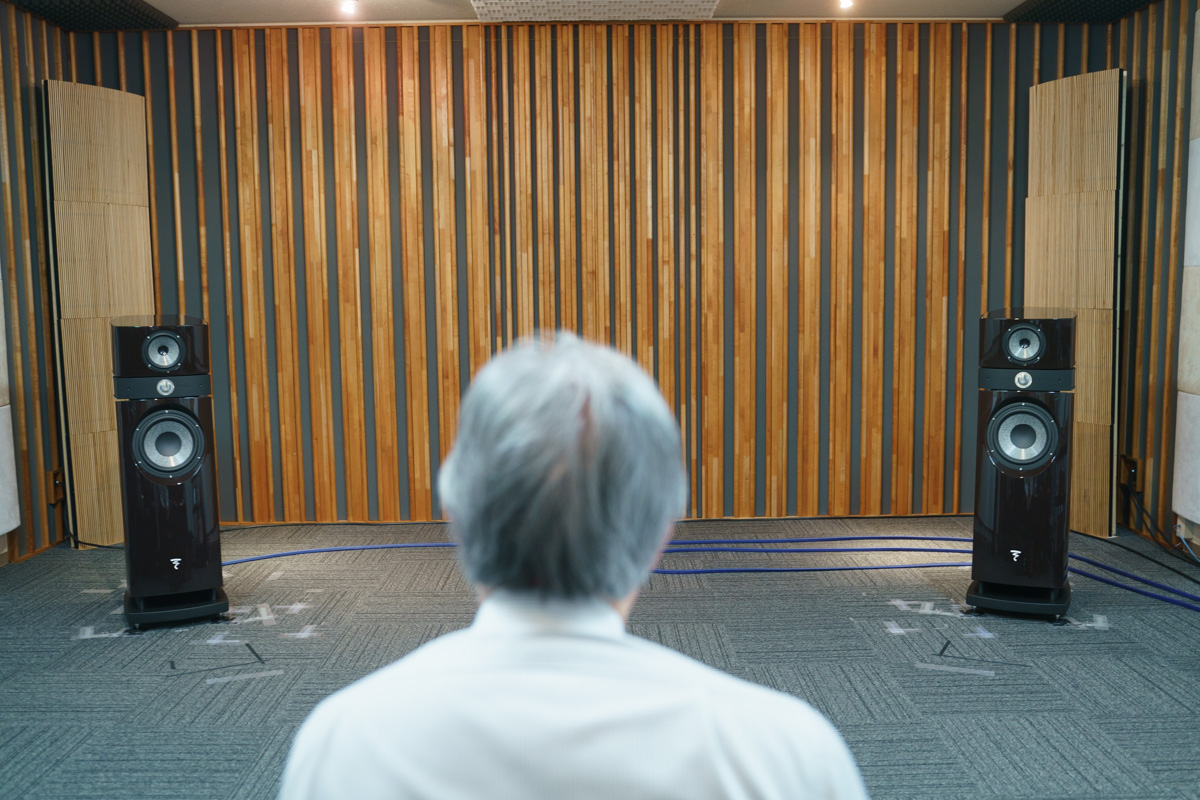
In the song ‘Tsuki no Nukumori’ from Aoi Teshima’s ‘Collection Blue’, which I often listen to, I could feel the resonance of the grand piano’s chassis more clearly with the D-10X. I thought ROHM’s evaluation board was also preferable with its glossy tones despite the singer’s crisp, clear voice. If this evaluation board had utilized independent left and right DAC chips, the sound quality might have come across as antagonistic.
In the Stereo Sound CD, a collection of famous Deutsche Grammophon recordings, the D-10X, which is a complete audio device, was superior in terms of the rich, taut voices of the men and women singing in the opera. Although the sound of the evaluation board was hardly inferior, it was not comparable to the engineer’s skill in creating a solid LUXMAN sound.
But I also kind of wanted this evaluation board since it seems to be available for individual purchase from distributors such as Digi-Key and Mouser. However, you won’t get the luxury of ROHM’s aluminum cut high rigidity housing that incorporates two separate, stabilized power supplies for the digital and analog circuits, so you can’t get the same sound at home as you can here.

I also compared the MUS-IC BD34301EKV with the new BD34352EKV, and to be honest I couldn’t find a clear difference in sound quality. But after comparing both ICs on their respective boards, the MUS-IC definitely has a more dynamic feeling, superior tonality, and a more refined sound quality. However, the external DIRs (Digital audio Interface Receivers) mounted on the evaluation boards appear to be different, with slightly different current values, so the discrete I/V conversion circuit constants that align the output values will not necessarily be the same.
At the same time, the new BD34352EKV is very close to the MUS-IC BD34301EKV in terms of sound quality. This is very promising. The feeling I got from the sound was that the company has the ability to make significant inroads in the high-performance DAC market, including against overseas brands.
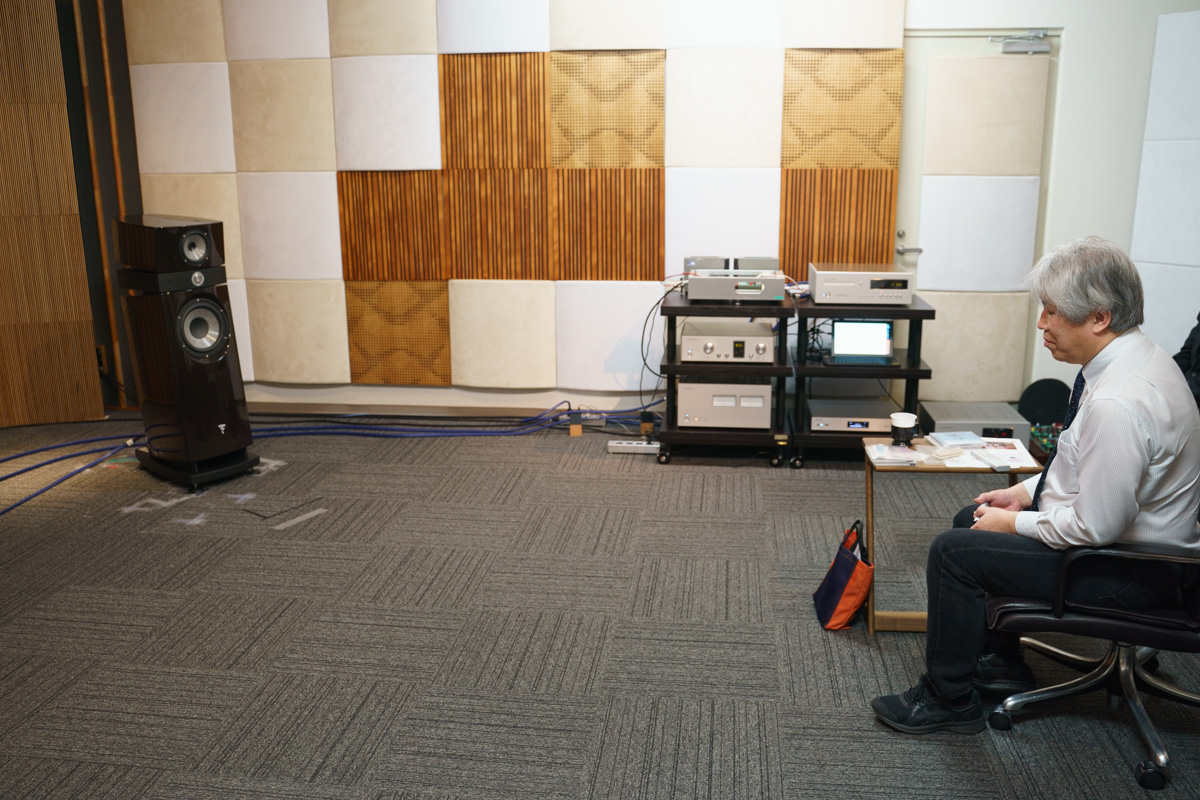
Now, let’s wrap things up. Reading up on ROHM's material, it is clear that the company has a deep connection to music. For example, on the MUS-IC web page there’s a photo of the ROHM Theatre Kyoto in, Kyoto City, Japan.

ROHM’s founder, Kenichiro Sato (1931-2020), who had such a love for classical music that he aspired to become a pianist as a student, established the Rohm Music Foundation (a public interest incorporated foundation) to support music culture – including the promotion of promising young musicians. The foundation has provided scholarship assistance to more than 500 musicians, such as Daishin Kashimoto, a world-renowned violinist and first concertmaster of the Berliner Philharmoniker.
The MUS-IC BD34301EKV was developed with an emphasis on expressing three elements that are important when listening to classical music: Spatial Reverberation, Quietness, and Dynamic Range. ROHM also conducts research on how to enjoy music by listening to actual sounds at concerts that the company holds and sponsors as well as sounds recorded that day. I am convinced that this sincere attitude towards music is a major reason why ROHM was able to develop such high-performance DAC chips with superior sound quality.

